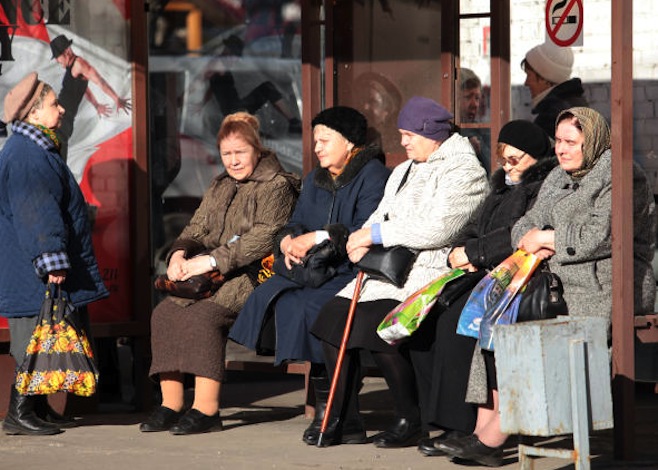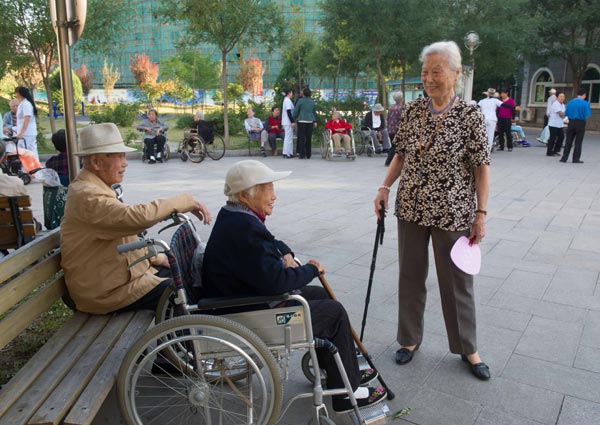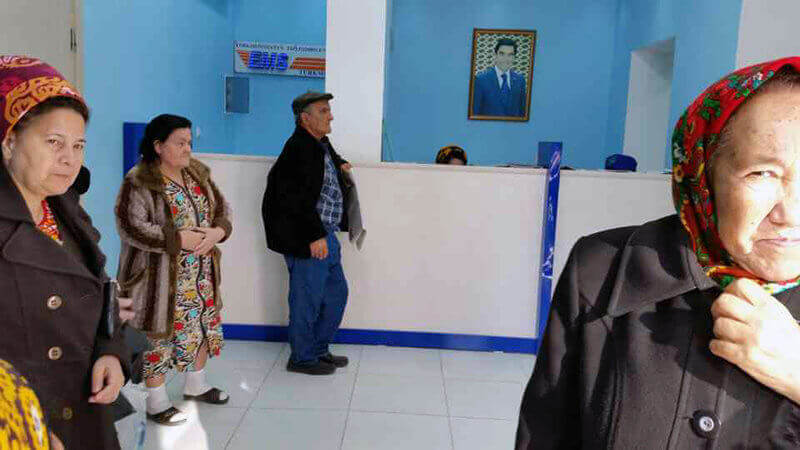Currently, any working person hopes for a decent retirement. To get it, he must officially work and pay insurance premiums to the Pension Fund of the Russian Federation. Every citizen of our state has heard such a term as insurance payments for OPS. What is it? Throughout his life, the worker performs labor functions, receives a salary, and the employer deducts from it the amount of contributions to the Pension Fund. Based on these deductions, a pension is formed for an elderly citizen who has gone on a well-deserved rest, as well as for a population with disabilities. As a result, insurance contributions to the Pension Fund of the Russian Federation at the OPS, which will be discussed in this article, are a guarantee of a secured old age.
In the upcoming 2019, the upcoming changes in the issues of pension insurance premiums are coming. In the framework of this article, we will consider what innovations the government prepared in 2019 and how this will affect the issues of calculating and paying contributions.
Concept
Insurance contributions to the Pension Fund are compulsory pension insurance payments. They are levied on companies and individuals in order to ensure financial guarantees for citizens to receive insurance coverage for the corresponding type of compulsory social insurance.
Such contributions to the Pension Fund of people are present in one form or another in virtually all countries of the world.
From 01.01.2017, these contributions are regulated by chapter 2.1. and 34 of the Tax Code.
Previously, they were regulated by the Federal Law on Contributions to the Pension Fund dated July 24, 2009 N 212-FZ. Elements of taxation related to insurance premiums (Article 18.2. Of the Tax Code) are as follows:
- object of taxation of insurance payments;
- base for calculating insurance payments;
- billing period;
- amount of insurance payments;
- the procedure for calculating insurance premiums;
- insurance payment mechanisms.

basic information
The government has certain social responsibilities before people, for the implementation of which it needs financial resources. But it’s unrealistic to simply take and print funds. As a result, to pay salaries to municipal employees, scholarships, pensions and various social benefits, companies calculate the set percentage of the salary of employees in the state budget.
At the same time, a fund is created for each cost category, which forms the budget and is responsible for the implementation of social obligations. The compulsory insurance contribution to the Pension Fund is presented in the form of monthly deductions. Pension insurance payments that create the Pension Fund are deducted by employers as a percentage of the employee’s salary. They are considered a certain cost item of the insurer, which is the employer in this case.
System principles
TSA is a system that was created by the state to reimburse pensioners for a portion of lost income.
The mechanisms of work of TSOs are based on personal records of the work experience of employees, which enables the state:
- generate credentials for each citizen;
- to control the employment of a citizen and the duration of work on it;
- determine the number of pension points for calculating the necessary amounts in the future.
Insurance payments are made to all retired citizens according to the results of their merits, depending on age and salary.
How is the RF PF formed?
The formation of PF has a number of features. The Pension Fund of the Russian Federation and contributions to it are made by calculating the amount of insurance payments at the time of approval and payroll, and their deductions occur every month. Tax reports are submitted every quarter.Documents in companies with a staff of more than 25 people are transmitted only in electronic form, and for the rest - in paper.
What categories of people should pay OPS payments?
Insurance payments must be paid by:
- citizens who make payments to other persons;
- companies with more than 1 employee;
- individuals who do not fall under the category of IP;
- self-employed population.
Representatives of different categories of taxpayers must deduct insurance payments for each category of TSO. In 2016, a law came into force in accordance with which the self-employed population is defined as a certain category of taxpayers who must formulate and calculate insurance payments in the TSO.

Payment Organization
The pension fund and the payment of contributions to it are strictly regulated by law. In coordination with the Tax Code of the Russian Federation, insurance payments to the OPS must be transferred on the 15th day of each month at the established details. In the case when 15 falls on a weekend or a festive day, the deadline for payment is postponed to the first working day. If for any reason the company or individual entrepreneur did not timely transfer the insurance premium, it will be collected from them by the regulatory body.
Payment order
The Pension Fund base and social contribution are determined separately for each employee. Payments must be paid from the beginning of the billing period at the end of the working month. The size of contributions is the same for everyone, regardless of the criteria of labor. For employees who work in unsafe production facilities, benefits are not used.
Insurance contributions to the Pension Fund of the Russian Federation are calculated separately for each type of insurance. Insurance payments for OPS are paid at the bank. Payment is made in full, without separation into insurance and funded parts.
Exemption from fees
Representatives of a small business (IP) may be exempted from payment if they had periods during which they did not carry out any activity. The legal grounds for canceling payments are as follows:
- military service;
- child care up to 1.5 years;
- five years of staying abroad with her husband, who works at the diplomatic consulate, etc.
It should be noted that in all of the above options, periods are taken into account in the work experience of the employee.
Distribution of Contributions to the Federal Tax Service Inspectorate
If there is a unified pension system available today in the Russian Federation, received payments are divided into joint and individual rates in the ratio of 6:16. For example, six percent of insurance payments are directed to the formation of pensions and other state needs defined by pension regulations, and sixteen percent to future employee pension.
In connection with the past pension reform, sixteen percent is also distributed: ten percent goes to the allocation of insurance pension funds; six percent goes to the formation of the funded part.
This is true if a citizen was born in 1967 and after that did not refuse a funded pension. If not, all sixteen percent go to the insurance part. Since 2016, 16% are sent to the insurance part, regardless of the employee’s choice, due to the temporary suspension of this provision.
Changes since 2019
In 2019, the main taxpayers of contributions of the OPS who are required to pay this type of tax are:
- persons making payments and other amounts of remuneration to individuals;
- SP.
If an individual entrepreneur has employed persons and employees under civil law contracts, it is necessary to make contributions to the Pension Fund not only for themselves, but also for them.
In 2019, these contributions can be directed:
- OPS pension insurance;
- for medical insurance of compulsory medical insurance;
- for sickness, pregnancy and maternity insurance (VNiM).
In 2019, the amounts for injuries are also paid to the bodies of the FSS (Federal Law of July 24, 1998 No. 125).
Fundamentals of calculating contributions for OPS
The calculation of contributions in 2019 is carried out with a combination of the following elements:
- amounts of payments to individuals;
- tax base restrictions;
- tariffs.
The amount of non-assessable contributions is specified in Art. 422 of the Tax Code of the Russian Federation.
The changes in 2019 did not affect the taxable base. It can still be defined as the amount of payments corresponding to paragraph 1 of Art. 420 Tax Code of the Russian Federation. The amount received is reduced by the size of the non-taxable quantities that are indicated in Art. 422 of the Tax Code of the Russian Federation. Example: fortune, mother aid up to 4000 rubles.

Fees for legal entities in 2019
In 2019, the size of tariffs also remains at a rate of 30%, with the exception of the situation when the company enjoys privileges (Article 426 of the Tax Code of the Russian Federation).
The size of insurance tariffs in 2019:
- at the OPS - 22%, + 10% after exceeding the payment base;
- for compulsory medical insurance - 5.1%, without base restrictions;
- at the FSS - 2.9%, without base restrictions.
These rates apply to:
- residents of the Russian Federation;
- temporarily residing foreign guests, except for a group of highly qualified specialists (VKS);
- EAEU citizens.
The table shows data on tariffs for legal entities on payments to individuals.
| View | Base in 2019 (marginal), rubles | Base limit bet in 2019 | Limit excess rate |
| OPS | 1 150 000 | 22 | 10 |
| FSS | 865 000 | 2,9 | 0 |
| Compulsory medical insurance | Not | 5,1 | - |
Earlier, the government provided for an increase in the tariff for OPS from 2021 to 26%. But from January 1, 2019, this tariff was documented in a solid value of 22% without specifying a term (Federal Law on Contributions to the Pension Fund No. 306-FZ of August 3, 2018).
The rate has not changed, but the limit base has increased. The change in the size of the base is reflected in paragraph 3 and paragraph 6 of Art. 421 of the Tax Code of the Russian Federation. That is, if the employee’s income for the year exceeds the specified amounts, the employer must calculate 10% in the social security payroll (clause 1 of article 426 of the Tax Code).
The table shows the data on the increase of limits on contributions from TSOs.
| Year | OPS limit |
| 2017 | 876 000 |
| 2018 | 1 021 000 |
| 2019 | 1 150 000 |
Calculation of contributions when changing limits in 2019 according to the OPS
In 2019, in accordance with changes in payments up to the amount of 1,150,000 rubles. need to calculate:
- 22% in OPF at general rates;
- 20% at preferential rates.
An amount of more than 1,150,000 rubles must be calculated another 10% when applying the general tariffs.

Example of a change in conditions in 2019
Initial data:
- the company uses general tariffs;
- the employee's salary is 100,000 rubles;
- The limit on pension payments is 1,150,000 rubles (it will be exhausted in November 2019);
The calculation is presented in the table below.
| Month | Base, thousand rubles | OPS, thousand rubles |
| Jan | 100 | 22 |
| Feb | 100 | 22 |
| Mar. | 100 | 22 |
| Apr | 100 | 22 |
| May | 100 | 22 |
| June | 100 | 22 |
| July | 100 | 22 |
| Aug | 100 | 22 |
| Sep | 100 | 22 |
| Oct | 100 | 22 |
| Nov | 100 | 22 |
| Dec | 100 | 11 |
Changes in 2019 FE contributions to the Pension Fund without employees
Individual entrepreneurs, like ordinary legal entities, pay taxes. In addition, they are required to participate in the compulsory insurance program in the bodies of the RF PF, FSS and MHI. At the same time, deductions go both for themselves and for employees.
Consider what changes await IP in 2019, which operate without the use of wage labor.
The basic rules for the payment of insurance premiums by IP to the Pension Fund with no employees that have been preserved since 2018:
- The payment of insurance premiums for individual entrepreneurs is a mandatory element, regardless of the taxation system used, as well as in the absence of activity. That is, if tax returns are filed with zero values, then payment of contributions to insurance funds remains mandatory.
- The calculation of the amount of contributions to the funds depends on the number of days of operation in the accounting year. That is, it starts from the moment of registration either from 01.01.2019 and ends with the closing date or 12.31.2019.
- Until 01.01.2018, the amount of payments depended on the size of the minimum wage, and from the beginning of 2018, this rule was changed. For 2019, the rule is the same: the new calculation procedure is determined by the Federal Law of November 27, 2017 No. 335.
What has changed in 2019:
- the amount of contributions increased for each fund.
The table provides data on changes in the amount of payments on contributions.
| Year | Compulsory medical insurance, rubles | PF, RUB | Total amount, rub. |
| 2018 | 5840 | 26545 | 32385 |
| 2019 | 6884 | 29354 | 36238 |
| 2020 | 8426 | 32448 | 40874 |
Thus, the amount of increase in contributions for individual entrepreneurs in 2019 is:
- for compulsory medical insurance: 6884 - 5840 = 1044 rubles .;
- amount of the contribution to the Pension Fund: 29354 - 26545 = 2809 rubles .;
- the total rate increase is: 1044 + 2809 = 3853 rubles.
The due date for the payment of contributions is December 31, 2019.
In the event that the individual entrepreneur receives income in excess of 300 thousand rubles, the amount of deductions for the exceeding amount also remained at the level of 1% for 2019.
Maximum amount of payments to funds in 2019installed within 234 832 rubles. The increase in the maximum amount in 2019 amounted to 22,472 rubles.

Individual contributions to the Pension Fund without workers
Initial data:
- IE without workers;
- tax system - STS 6%
- the amount of income in 2019 will amount to 30,000,000 rubles.
Decision:
- the amount of contributions to the Pension Fund for basic deductions is: 29354 rubles at OPF;
- Until 1.07.2020, it is necessary to pay 1% to this amount:
(30,000,000 - 300,000) * 1% = 297,000 rubles.
The amount received exceeds the established maximum limit of 234,832 rubles. The amount of payments to the OPF will be:
234 832 - 29354 = 205 478 rubles.
Changes in 2019 for individual employees
In a situation where an individual entrepreneur has employees, in addition to the payments described above for himself, the employer pays insurance contributions to the Pension Fund for his employees. He pays these contributions from the salary of his employees.
In this view, when calculating in 2019, you also need to take into account a number of features and changes, especially with regard to rates.
The table shows the data on the rates to the Pension Fund and insurance premiums of FE in 2019.
| Insurance | Standard rate 2018 | Preferential rate 2018 | Excess base 2018 | Standard rate 2019 | Preferential rate 2019 | Excess base 2019 |
| OPS | 22 | 20 | 10 | 22 | Canceled * | 10 |
* The cancellation of preferential rates from the table in 2019 is typical only for the following individual entrepreneurs:
- IP on the simplified tax system for certain types of management (subparagraph 5, paragraph 1, paragraph 3, paragraph 2 of article 427 of the Tax Code of the Russian Federation);
- IP on PSN (subparagraph 9, paragraph 1, article 427 of the Tax Code of the Russian Federation);
- IP on UTII for pharmacies.
All of the above categories lose the right to apply a reduced rate, and for them insurance premiums grow from 20% to 30%.
OPS Contribution Reporting
Not later than the 30th day of the month that is calculated for the reporting one (Clause 7, Article 431 of the Tax Code of the Russian Federation), it is necessary to send the calculation of the ESSC to the Federal Tax Service in a form that includes the data from the reports earlier PCB and 4-FSS.
The payment mechanism, in general, has not changed. As before, to transfer funds to the company, you should contact the banking organization where the proper settlement documents are drawn up. The required treasury accounts and BCC are indicated.

Responsibility for non-payment of contributions to the TSA in 2019
Pension fund and payment of contributions are strictly regulated by the timing.
A penalty is provided for late or understatement of taxes in accordance with Art. 122 of the Tax Code of the Russian Federation. The size of this fine is 20% of the amount of non-payment.
In case of underestimation of the amount of payments intentionally, the amount of the fine may be 40% of the unpaid amount.
Peculiarities of applying tariffs for foreigners in 2019
Such citizens include those who arrived in our country for temporary residence and do not have citizenship. There is one more condition: they should not belong to highly qualified specialists (VKS).
The size of tariffs for such employees is set in the table below.
| View | Tariff within the base | Tariff over base |
| OPS | 22 | 10 |
Tariffs for videoconferencing are presented in the table below.
| View | Tariff within the base | Tariff over base |
| OPS | 22 | 10 |
Changes in reduced tariffs for 2019
These rates are designed for hotel activities:
- IT enterprises;
- residents of the SEZ;
- Skolkovo residents;
- NPO on STS.
Benefits for such a company are provided for a period of 6 years: from 2019 to 2024.
The data on the changed rates of reduced tariffs in 2019 are shown below.
| Privileges | 2018 year,% | 2019 year,% |
| Intellectual Property Companies Companies that introduce new technologies | PFR - 13 FSS - 2.9 Compulsory medical insurance - 5.1 | PFR -20 FSS -2.9 Compulsory medical insurance - 5.1 |
| Information Technology Companies | FIU - 8 FSS - 2 Compulsory medical insurance - 4 | PFR -8 FSS -2 Compulsory medical insurance - 4 |
| Companies that use STS and benefits Pharmacy companies on the simplified tax system IP on PSN | PFR - 20 FSS - 0 Compulsory medical insurance - 0 | PFR -22 (10 over the limit) FSS -2.9 Compulsory medical insurance - 5.1 |
| NGOs and charities at the STS | PFR - 20 FSS - 0 Compulsory medical insurance - 0 | PFR -20 FSS -0 Compulsory medical insurance - 0 |
| Skolkovo | FIU - 14 FSS - 0 Compulsory medical insurance - 0 | PFR -14 FSS -0 Compulsory medical insurance - 0 |
| SEZ residents | PFR - 6 FSS - 1.5 Compulsory medical insurance - 0.1 | PFR -6 FSS -1.5 Compulsory medical insurance - 0.1 |
Refund of Overpayment on Contributions
The situation with excessive transfer of payments is not unique. Within 10 days from the date of discovery of this fact, the control body informs the payer of the overpayment. In this case, he has the right to hope for:
- joint verification of settlements with the territorial authority;
- refund of money transferred in excess.

Overpaid funds can be returned by:
- transferring them to the current account of the payer;
- set-off of future payments or repayment of debts for violations of pension legislation (in accordance with the statement of the payer, which was submitted to the control body in writing or electronically).
The decision to choose a method of refund is made by the body under control within 10 days from the time
- overpayment finding;
- receiving appeal from the payer;
- observation of reconciliation;
- entry into legal force of a decision.
Then it is brought to the attention of the payer (personally, upon receipt or in another way) within 5 days.
Key questions and errors in calculating the contributions of OPS
Question No. 1. How to take into account the amount of payments for an employee to establish the maximum base?
Answer: the amount must be determined by the result of the increase from the beginning of the year to the end for each employee separately.
Question No. 2. The size of the rates for assessing contributions of the TSO?
Answer: up to 1,150,000 rubles. - the rate is 22%, over this amount - 10%.
Mistake: often in the base for taxation include all types of employee benefits. However, only those that are established at the legislative level for calculating the base should be included.
